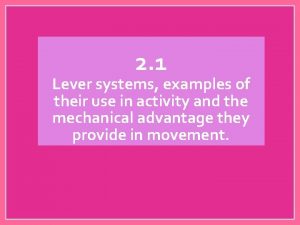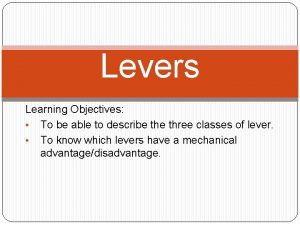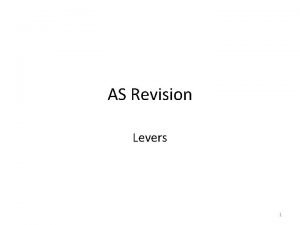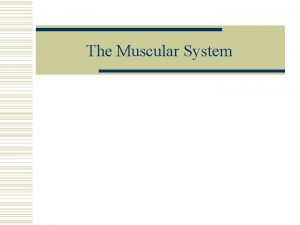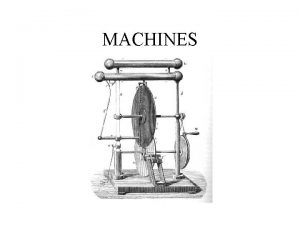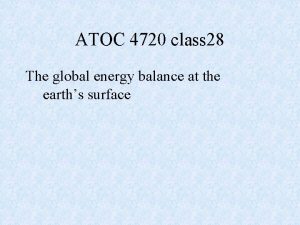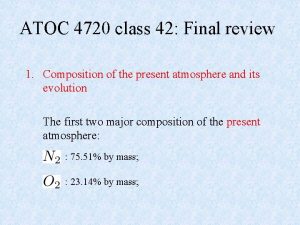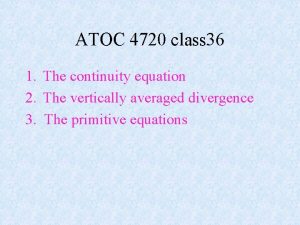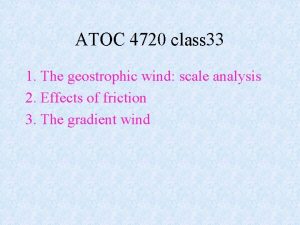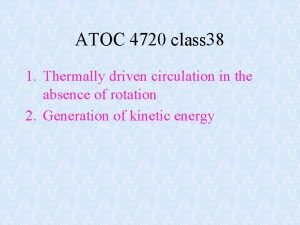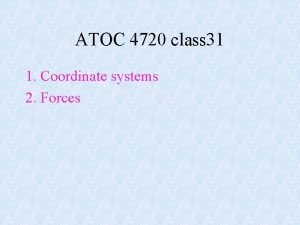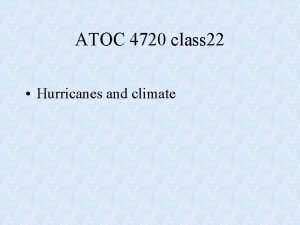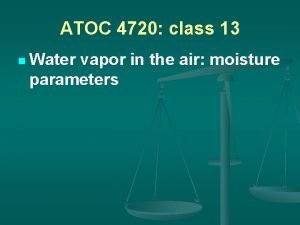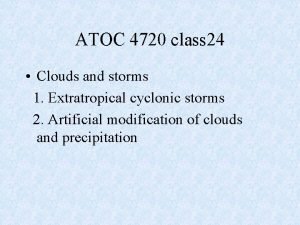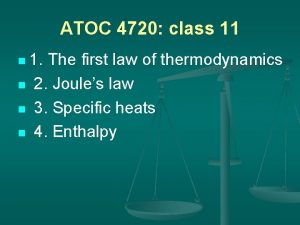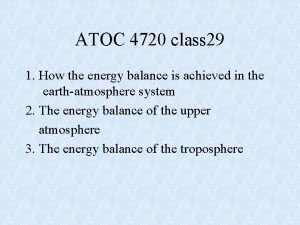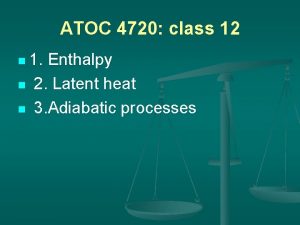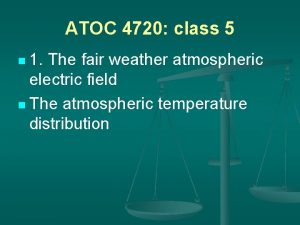ATOC 4720 class 15 n The second law














- Slides: 14

ATOC 4720: class 15 n The second law of thermodynamics n The Second Law of Thermodynamics: the maximum fraction of heat that can be converted into useful work.

Carnot cycle: cyclic and reversible processes A cyclic process: a series of changes in the state of a working substance in which its volume changes and it does external work, subject to the conditions that the working substance returns to its initial conditions. Since:

Net heat absorbed is equal to external work Reversible: If each state of the system is in equilibrium during the transformation so that a reversal in the direction of an infinitesimal change returns the working substance and the environment to their original states.

Absorb: Reject: External work: Efficiency:

Carnot cycle: 4 operations Q 1 Begins at A Q 2 Heat is transferred from warmer (H) to colder (c) body

It is only by transfering heat from a warmer to a colder body that heat can be converted into work in a cyclic process.


No engine can be more efficient than a reversible engine working between the same limits of temperature and all reversible engines working between the same temperature limits have the same efficiency

Example: heat engine H: boiler C: condenser Water: liquid and vapor Reversible Carnot cycle: refrigerating Machine. An outside agency is required (motor) to drive the motor.

Entropy

The ratio Stays the same no matter Which isothermo is chosen in passing from one adiabat to anotoher. Therefore, Is a measureof the difference between the two adiabats; It is called the difference in Entropy.

We define: As the increase in entropy S. Unit mass: The first law of thermodynamics:

We can derive that: Transformations in which the entropy remains constant (and therefore potential Temperature remains constant) are called Isentropic.

 Newton's first law and second law and third law
Newton's first law and second law and third law Newton's first law
Newton's first law 186 282 miles per second into meters per second
186 282 miles per second into meters per second V=k/p
V=k/p How to calculate boyle's law
How to calculate boyle's law Example of mechanical disadvantage in sport
Example of mechanical disadvantage in sport Advantages and disadvantages of second class levers
Advantages and disadvantages of second class levers Effort arm and resistance arm
Effort arm and resistance arm Examples of second class levers
Examples of second class levers Linked second class levers
Linked second class levers A device that does work
A device that does work Levers used in everyday life
Levers used in everyday life Constant slope
Constant slope Mendel's second law of independent assortment
Mendel's second law of independent assortment Entropy change formula
Entropy change formula





